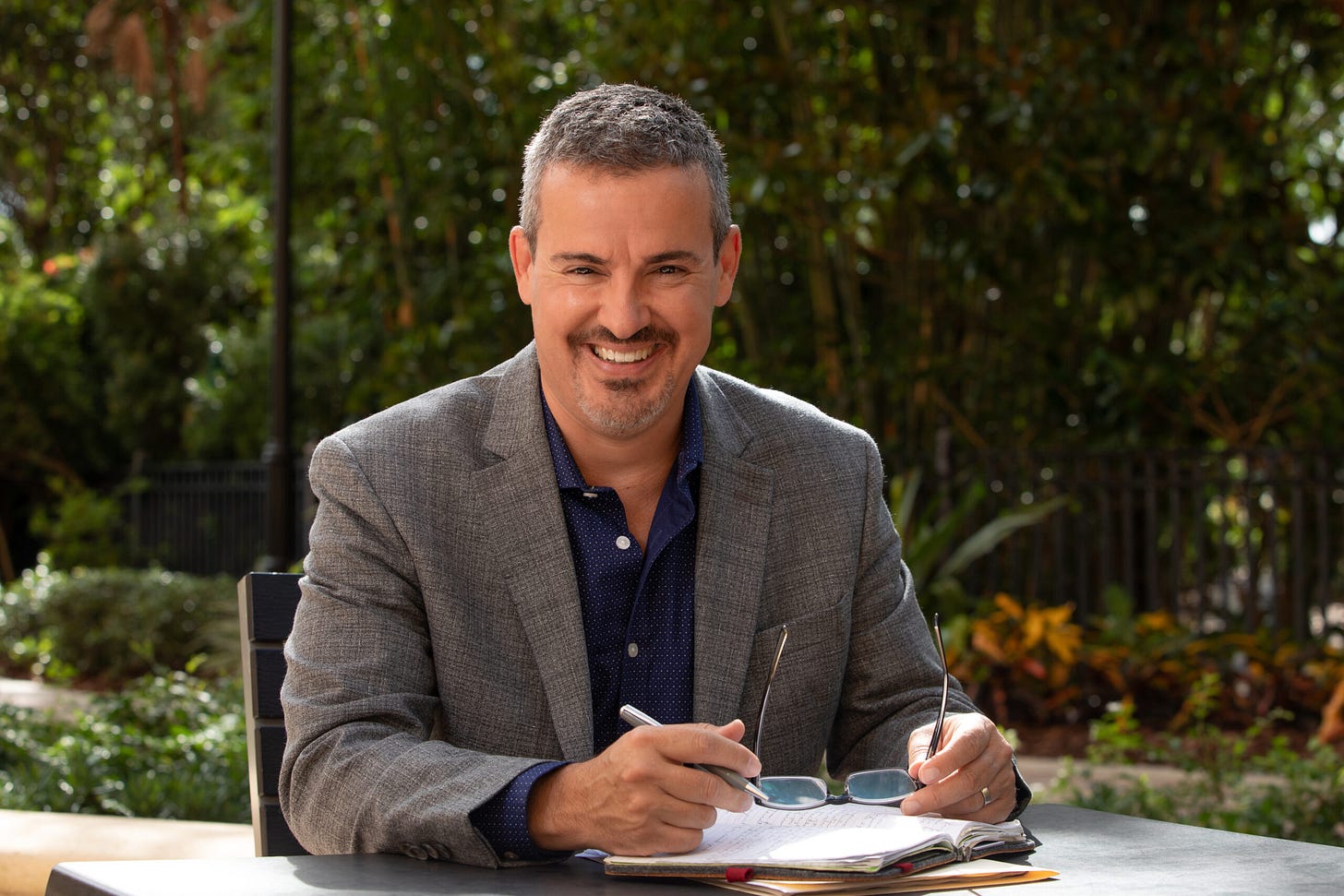When the Dead Won’t Stay Buried
Reviewing Tony Woodlief’s Southern Gothic Debut, ‘We Shall Not All Sleep’
Ray Waterson, an alcoholic Vietnam vet with an otherworldly ability to witch water and divine the location of pretty much anything else, leads his son into an empty field. Young Daniel watches while Ray steps barefoot in slow, deliberate circles, sometimes dancing, as if his strings were tugged by invisible hands.
When Ray suddenly stops, hoists his arms like the beam of the cross, and stoops to drive his knife into the ground, Daniel knows: Dad’s found water. Time to dig the well.
The scene captures some of what makes Tony Woodlief’s debut Southern gothic set mostly in the 1970s, We Shall Not All Sleep, both unsettling and engrossing. It’s a tale of risky powers, dangerous bequests, and a boy growing up in the shadow of man tormented by guilt and haunted by much more—and much worse.
A Boy in Search of Himself
Daniel occupies the heart of the novel and narrates its story, intercut with third-party reports of various kinds, including news articles, planning board minutiae, and eerie reports of the dead.
Contradictions shape Daniel’s identity. There’s his churchgoing mother Lee Ann who is passionately in love with her husband but fears his uncontrolled and sometimes unearthly nature. She knows he bears deep wounds from the war, though she doesn’t know the full extent, nor does she trust what’s lurking in his Cherokee lineage and possible concessions he’s made to malevolent spiritual forces.
Then there’s Ray himself. Gifted in inexplicable ways yet prone to debilitating bouts with the bottle, Ray has held Lee Ann’s heart since childhood. She tries to pull him toward the light, sometimes trusts he’s already there, but fears he’ll somehow lead Daniel into dangerous waters, both metaphorical and real.
As Daniel grows he sees this rift between his parents and soon feels it himself. Which way should he go? His friends, oblivious to the otherworldly aspects of the situation, are of little help except comraderarie and fun—not to be undersold—all except Julie, who suspects deeper, more dangerous currents below the surface.
A Long Train of Ghosts
The novel jumps into gear when Ray strikes little Bobby Doyle with his jeep while running to town for supplies. Daniel fills the passenger seat when it happens. Doyle darts out of nowhere, and Ray’s brake foot stands no chance against the surprise.
The boy’s death casts a pall over the Waterson family and Ray’s reputation among some in the town. For Daniel, it jars him into another world—in more ways than one. First, the adult world of inexplicable tragedy and wounded recrimination. Second, the spiritual world.
The Doyle boys dies, but he doesn’t leave. Bobby visits Daniel, standing aloof in his black funeral suit, rarely communicating, just glaring with his glossy jet eyes. Bobby haunts Ray as well, but there’s a long line in front of him.
The Waterson boys see ghosts, potentially an unending train. Bobby is Daniel’s first. But Ray’s Vietnam kills, including one so unspeakable he dares never mention it, follow behind him, encircle him when camping, taunt him while drinking. He’s rarely alone. With the Doyle boy’s appearance to Daniel, it seems the choice of which way to go might already have been made.
Sometimes the bond of this world and the next seems to offer benefits, possibly blessings. But Daniel remains uncommitted. Just as well, because even after Ray uses his mysterious powers over water to save Julie’s life, she knows and even fears the risks.
The Larger Drama
All these contested supernatural powers, along with Ray and Daniel’s more natural cussedness, end up recruited in a drama of local politics colorfully and captivatingly rendered by Woodlief with a cast of pitch-perfect characters.
Daniel’s grandmother, Granny Watts, drawn right out of a John Birch Society pamphlet and animated by prophetic ferocity, a sailor’s mouth, and a talent for haranguing the city council and twisting its proceedings in knots.
A conniving city-council member and contractor, Fred Ledbetter, with eyes on Granny Watts’s property.
Clay Tompkins, a long-haired youth minister recently off a Jesus People bus and far out of place in the local Baptist church where the Waterson’s attend when they’re not on the outs with the pastor.
Ray’s murderous war buddy Harlan Carver, who plays the heavy and must have been written with a villainous Brian Dennehy in mind.
A skeptical but gentle neighboring doctor and his wife, who help steer Daniel in the right direction as opportunity presents.
And, of course, Julie.
Unmentioned so far, the Crow River runs through the Watersons’ town, a character unto itself, sometimes gentle and welcoming, other times violent and menacing, always representing something eerily more than itself—such as when Bobby’s ghost stands midstream and beckons Daniel to wade out and rest beneath the currents.
Woodlief artfully ties all these threads together, the earthly and the ethereal, the mundane and the miraculous. Through Daniel’s eyes, he explores the complexities of family, inheritance, and the enduring power of memory. The resulting story lingers like a ghost, filled with beauty, sorrow, and a persistent hope.
Thanks for reading! If you enjoyed this post, please hit the ❤️ below and share it with your friends.
Not a subscriber? Take a moment and sign up. It’s free for now, and I’ll send you my top-fifteen quotes about books and reading. Thanks again!
Before you go . . .






It sounds interesting.
When my parents built their house, over four decades ago, a local located where to dig their well by means of 'water-witching'. My parents were good Baptists, abhorred witchcraft, and laughed at superstition. But water witching was such an ordinary part of the fabric of rural life to them they didn't think anything of it, regarding it as folk wisdom rather than supernatural ability. The well is still providing water.
What a review, Joel! You’ve enticed this reader. I’m going to check our library.